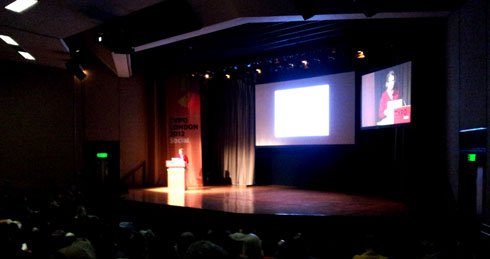Typo London 2012: Social
Back in October 2012 TYPO London happened. With a host of great speakers on a topic closely related to our line of work it seemed sensible to acquire some tickets and go along. Thankfully a friend, Peter Gregson, was speaking about the Listening Machine so tickets were found for free. Thanks Peter!
Social Design
Designers being social was the underlying theme of the conference. Not just leaving the desk from time to time to hang out in the pub (though that is a good idea) but also taking advantage of the different media and technology available and design as a social act, whether it is working for a global brand or designing a new eco-friendly typeface. Being socially minded as a designer better equips you for changes that will happen during your work life.
Typo 2012 overview
We made it to one of the days of the conference. Here is a little overview of what happened:
Held at the University of London, just off Russell Square, we emerged from the rain to discover a mass of designer types sipping on coffee browsing the conference brochure. First of the days talks are starting, into the lecture room we go …

Sara De Bont
Sara looked at 2 main areas. How can work itself be social? and Graphic designers as a social community.
For the first topic Sara showed two projects. The first was the Barbican exhibition Radical Nature. They set up a design manifesto to look at how the design of the exhibition could have a low environmental impact by re-use and cutting out waste where possible. The second was the artissima 18 art fair in Turin, where they set up the office of statistics, an artificial company set up for the art fair to provide information is a visual way, thus making social design.
Secondly, Sara spoke of her own project Occasional Papers as a way of sharing rare in depth information in an affordable way, and so enabling a conversation amongst those who buy the books.
Tim Beard: Design is a social journey
Tim took us on a journey. From dialogue via the pub to play. Describing his approach to working as a designer and how by being social with your design work makes better things happen.
Starting from dialogue and how design as an open conversation leads to more ideas and better results within boundaries. This dialogue can lead to collaborations and chance meetings bringing chances to work on unexpected projects. Then to the pub, a reminder that creativity doesn’t just happen in the studio, pubs are where dreams are made. And then landing with the responsibility to do good work and think of how the work relates to people.
Anthony Burrell: Work hard and be nice to people
 A solo designer in the quaint town of Rye who spends a lot of time in the local print shop making posters such as this, he also does with moving image and three-dimensional work.
A solo designer in the quaint town of Rye who spends a lot of time in the local print shop making posters such as this, he also does with moving image and three-dimensional work.
Work hard and be nice to people. A straight forward approach to design is often the best, and one I’m inclined to agree with.
Even as a ‘solo designer’ it is worth noting that Anthony didn’t seem to spend much time designing alone, but often in collaboration, either with the local print shop or other designers or with people who know more about different types of materials.
Simon Manchipp: Branding not Blanding
Successful design is connected to society. If your brand doesn’t connect with people it’ll probably die.
Using his Maritime Museum and the Olympic character system projects, he showed that a logo firstly isn’t a brand, but is also no match for a good coherent idea, that gets people involved with what you are about.
He invited us to have principles in our work, to stand for something, to take risks, to be truthful and interesting. This is how good design creates good branding.
It’s all about the social.
What have we learnt?
There’s many different approaches to being social in our design work. Indeed there were many more talks to listen to and comment on than we were able to here. It’s good to step back and reassess how you work once in a while. This conference was excellent in reminding us that our work as creative/tech/research folk is for people and if its not, then it’s failed in some way.